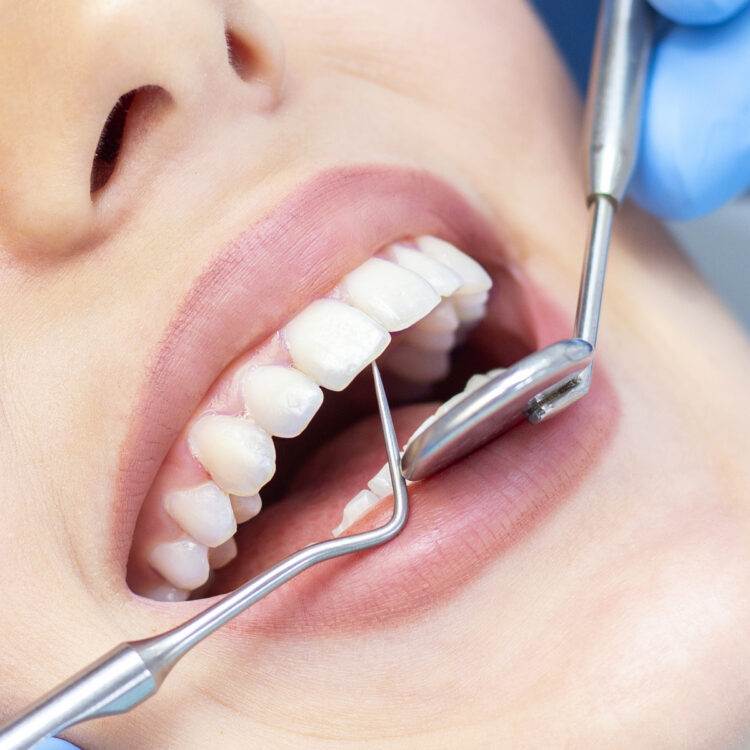We Create Beautiful Smiles
The goal is to save teeth and to provide teeth that look, feel, and work like natural teeth. The restored teeth also help keep your other teeth spaced correctly for a normal bite. Common types of restorative treatments are fillings, crowns, bridges, dentures, and dental implants.

Restorative Treatment
INLAY AND ONLAY PROCEDURES
Dental inlays and onlays are restorative dental procedures that are used to repair damaged or decayed teeth. They are also known as indirect fillings and are an alternative to traditional fillings or dental crowns.
Inlays and onlays are typically used when the damage or decay to the tooth is too severe for a filling but not extensive enough to require a crown. Inlays are used when the damage or decay is located within the cusps of the tooth, while onlays are used when the damage or decay extends to the tooth's surface or one or more cusps.
The procedure for placing inlays and onlays involves taking impressions of the damaged tooth and sending them to a dental lab, where a custom-made restoration is created. This restoration is then bonded to the damaged tooth using a special dental adhesive.
The materials used for inlays and onlays can vary, but commonly include porcelain, composite resin, or gold. Porcelain and composite resin are typically chosen for their aesthetic appeal, as they can be colour-matched to the natural teeth. Gold is chosen for its durability and strength.
One of the benefits of inlays and onlays is that they can help to strengthen the damaged tooth and restore its functionality, while also improving its appearance. They are also less invasive than traditional crowns and can be a more conservative approach to restoring damaged or decayed teeth.
Overall, dental inlays and onlays can be an effective and long-lasting solution for repairing damaged or decayed teeth, while also improving the appearance of a patient's smile.
Duration: 2 Days
COMPOSITE FILLINGS
Composite fillings are tooth-coloured fillings that will fit your mouth better than the other fillings. With this treatment, when you open your mouth or laugh, no one will notice that you have fillings.
The Benefits of Composite Filling
- Composite fillings blend seamlessly with your natural teeth, making them virtually invisible.
- The material is slightly flexible resulting in reduced drilling and preserving more of your natural tooth.
- The resin material in composite fillings creates a strong bond to your tooth.
- They are durable and can withstand moderate pressure and usage.
- They are well-suited to small fillings and repairs.
- Composite can also be used to handle other cosmetic alterations, such as changing the colour or shape of your teeth.
Duration: 1 Day

Restorative Treatment

Restorative Treatment
COMPOSITE BONDINGS
Composite bonding (also known as tooth bonding or dental bonding) offers a solution for minor damage or gaps in teeth. Dental bonding is usually used for filling chips, fractures, or gaps between teeth, or for fixing discolouration.
A composite resin is attached to a tooth and shaped to restore its original appearance. The colour of the resin is matched to your teeth, so it will appear as though it is a natural part of the tooth.
Composite bonding offers several advantages, including:
- Unlike some other cosmetic procedures, composite bonding typically requires very little, if any, removal of natural tooth structure.
- In most cases, the treatment can be completed in a single office visit.
- Composite bonding can address a wide range of cosmetic concerns, including chipped or cracked teeth, gaps, discoloration, and misshapen teeth.
- The material used closely mimics the appearance of natural teeth, providing a virtually undetectable solution.
- Composite bonding is often more cost-effective than other cosmetic treatments, making it accessible for many patients.
Duration: 1 Day



